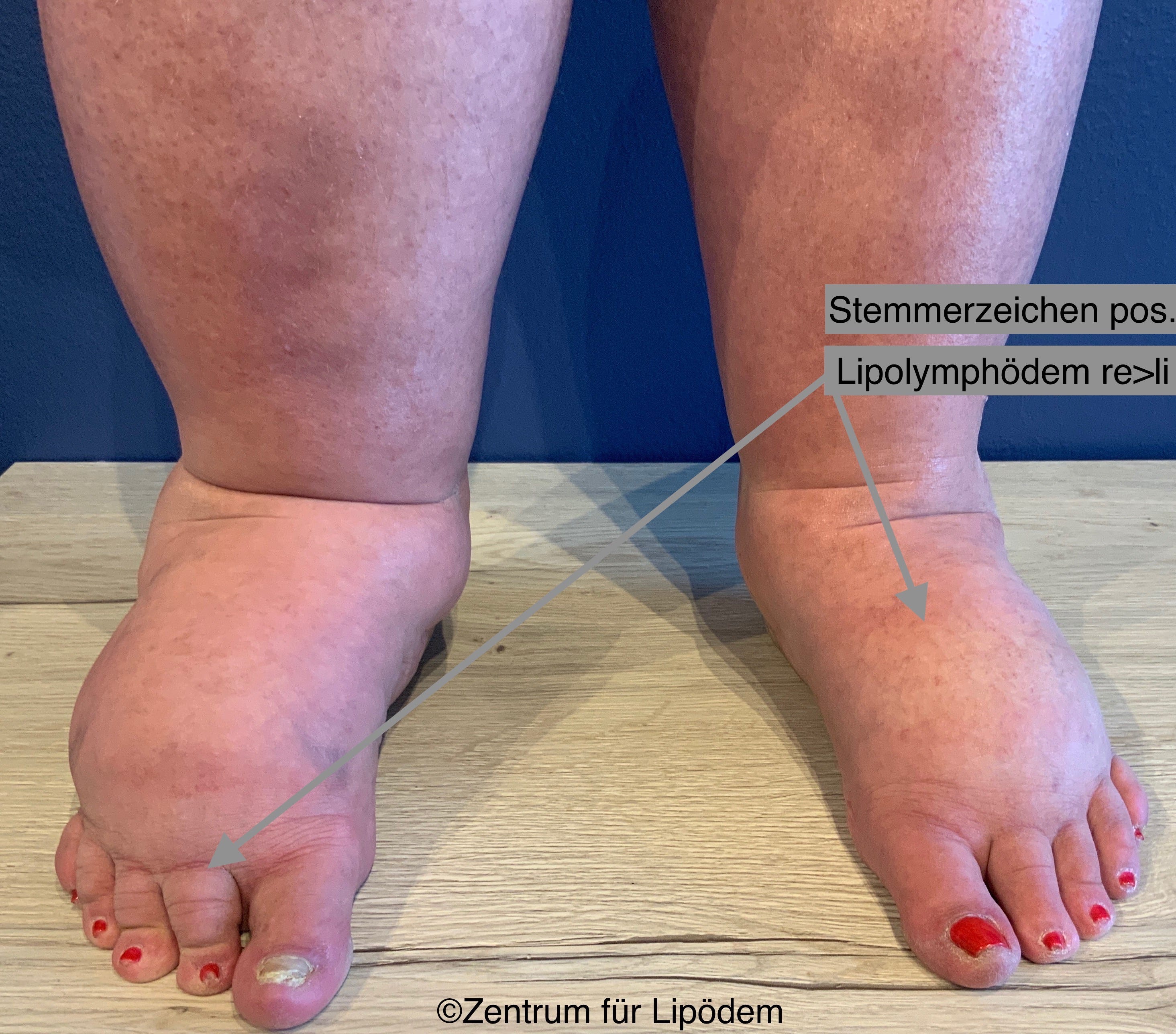Lipedema Stage 2 GDB: Understanding The Silent Struggle And Finding Hope
Imagine waking up every day feeling like your legs are carrying the weight of the world. That's what living with lipedema stage 2 GDB feels like for millions of women around the globe. Lipedema, often misunderstood and misdiagnosed, is not just about "being overweight." It's a complex condition that affects not only the body but also the mind and spirit. If you're reading this, chances are you or someone you care about is dealing with this invisible battle. Let's dive deep into what lipedema stage 2 GDB really means and how you can take control of your life.
Lipedema stage 2 GDB isn't something you hear about every day. Most people, even some doctors, don't fully understand what it is or how it affects those who live with it. But here's the thing—it's real, it's painful, and it's more common than you think. This condition doesn't just make your legs look different; it changes the way you move, feel, and even think about yourself. But there's hope. With the right knowledge and support, you can manage it and thrive despite the challenges.
As we explore lipedema stage 2 GDB, we'll break down what it is, how it develops, and most importantly, what you can do about it. Whether you're newly diagnosed or have been living with this condition for years, this article is here to empower you with the information you need to take charge of your health journey. So, grab a cup of coffee, get comfy, and let's get started.
- Discover The En Iyi Erkek Parfuumlm Your Ultimate Guide To Mens Fragrance
- Cosmo Chemnitz The Ultimate Guide To Discovering A Citys Hidden Gem
What Exactly Is Lipedema Stage 2 GDB?
Lipedema stage 2 GDB is like the middle chapter in a story that starts with subtle changes and can lead to more serious complications if not managed properly. At this stage, the fatty tissue buildup becomes more pronounced, causing noticeable changes in the shape and size of your legs. But it's not just about aesthetics. This stage comes with increased discomfort, pain, and sometimes even mobility issues.
Let's break it down further. GDB stands for "Gewebemultiplication Dysplasia of the Breast," but in the context of lipedema, it refers to the abnormal growth of fatty tissue in specific areas of the body. In stage 2, the fat cells start to cluster together, creating a lumpy, uneven appearance. This is often accompanied by swelling, tenderness, and a feeling of heaviness in the affected areas.
Key Characteristics of Lipedema Stage 2 GDB
Here are some of the hallmark features of lipedema stage 2 GDB:
- Pittenhart Trecker Trek Your Ultimate Adventure Guide
- Brand Werdau Heute The Rise Of A Modern Icon In Todays Market
- Visible fat deposits that are uneven and lumpy
- Increased tenderness and pain in the affected areas
- Swelling that gets worse as the day progresses
- Difficulty with movement and discomfort during physical activity
- Bruising easily without any apparent cause
These symptoms can vary from person to person, but they all point to the same underlying issue: an abnormal buildup of fatty tissue that doesn't respond to diet or exercise alone.
How Does Lipedema Stage 2 GDB Develop?
Understanding how lipedema stage 2 GDB develops is key to managing it effectively. While the exact cause of lipedema is still not fully understood, researchers believe it's a combination of genetic, hormonal, and environmental factors. Let's take a closer look at each of these elements:
Genetic Factors
If your mom, grandma, or sister has lipedema, chances are you might be predisposed to it too. Genetics play a big role in determining who gets lipedema and how severe it becomes. But here's the good news—just because it runs in your family doesn't mean you're destined to experience all the symptoms. Early intervention and lifestyle changes can make a big difference.
Hormonal Influences
Hormones, especially estrogen, seem to have a significant impact on lipedema development. That's why this condition is almost exclusively seen in women. Hormonal changes during puberty, pregnancy, and menopause can trigger or worsen lipedema symptoms. It's like your body is playing a game of hormonal tug-of-war, and unfortunately, lipedema often wins.
Environmental Triggers
While you can't control your genes or hormones, you can influence your environment. Stress, poor diet, lack of exercise, and even certain medications can exacerbate lipedema symptoms. The key is to identify and minimize these triggers as much as possible. It's not always easy, but it's worth it for your long-term health and well-being.
Diagnosing Lipedema Stage 2 GDB
Getting an accurate diagnosis for lipedema stage 2 GDB can be tricky. Many healthcare providers are still unfamiliar with this condition, leading to misdiagnoses such as obesity or lymphedema. But there are some telltale signs that can help differentiate lipedema from other conditions:
Physical Examination
Your doctor will likely start by examining your legs for the characteristic fat deposits and swelling. They may also check for tenderness and bruising, which are common in lipedema. Don't be surprised if they ask you to walk around or perform certain movements to assess your mobility.
Medical History
Sharing your medical history is crucial. If you have a family history of lipedema or have experienced hormonal changes that coincide with your symptoms, make sure to mention them. Your doctor may also ask about your lifestyle habits, such as diet and exercise, to get a better picture of your overall health.
Imaging Tests
In some cases, your doctor may recommend imaging tests like MRI or ultrasound to get a clearer view of the fat distribution and rule out other conditions. These tests can provide valuable insights into the severity of your lipedema and guide treatment decisions.
Treatment Options for Lipedema Stage 2 GDB
Now that you know what lipedema stage 2 GDB is and how it develops, let's talk about what you can do about it. While there's no cure for lipedema, there are several treatment options that can help manage symptoms and improve your quality of life.
Lifestyle Modifications
Making small but meaningful changes to your daily routine can have a big impact. Eating a balanced diet, staying hydrated, and engaging in low-impact exercise like swimming or walking can help reduce inflammation and improve circulation. Don't underestimate the power of these simple steps—they really do make a difference.
Compression Therapy
Compression garments are a game-changer for many women with lipedema. They help reduce swelling, improve lymphatic flow, and provide support to the affected areas. While they may not be the most comfortable thing to wear, the benefits far outweigh the inconvenience.
Manual Lymphatic Drainage
This specialized massage technique can help reduce swelling and improve lymphatic function. It's often used in combination with compression therapy for maximum effectiveness. If you're considering this option, make sure to find a qualified therapist who has experience with lipedema.
Living with Lipedema Stage 2 GDB
Managing lipedema stage 2 GDB is a journey, not a destination. It requires patience, persistence, and a willingness to adapt to changing circumstances. But you're not alone in this fight. There are countless women around the world who understand exactly what you're going through, and they're here to support you.
Building a Support Network
Connecting with others who have lipedema can be incredibly empowering. Joining a support group, either in person or online, can provide you with valuable information, encouragement, and friendship. You'll learn tips and tricks from those who have been there before you, and you'll have a safe space to share your own experiences.
Embracing Self-Care
Self-care isn't just about bubble baths and face masks (although those are great too!). It's about prioritizing your physical, emotional, and mental well-being. Make time for activities that bring you joy and relaxation, whether it's reading, painting, or simply spending time in nature. Remember, taking care of yourself is not selfish—it's essential.
Breaking the Stigma Around Lipedema
Lipedema is often misunderstood, even by healthcare professionals. This lack of awareness can lead to stigma and shame for those who live with the condition. But it's time to change the narrative. Lipedema is not a personal failure or a lack of willpower—it's a legitimate medical condition that deserves recognition and respect.
Advocating for Awareness
Spread the word about lipedema and its impact on those who live with it. Share your story, educate others, and advocate for better research and treatment options. Every voice counts in the fight against stigma, and together, we can make a difference.
Looking Ahead: The Future of Lipedema Research
While there's still much to learn about lipedema, researchers are making strides in understanding its causes and developing new treatments. Clinical trials are underway to test the effectiveness of various therapies, and new technologies are emerging that could revolutionize lipedema care.
Hope on the Horizon
As awareness grows and more resources are devoted to lipedema research, there's reason to be hopeful. The future may hold breakthroughs that make living with lipedema stage 2 GDB easier and more manageable. Until then, focus on what you can control and celebrate every small victory along the way.
Conclusion
Lipedema stage 2 GDB is a complex condition that affects millions of women worldwide. While it presents unique challenges, it's not insurmountable. With the right knowledge, support, and treatment, you can take control of your health journey and thrive despite the obstacles.
So, what's next? Share this article with someone who needs to hear it. Join a support group and connect with others who understand what you're going through. And most importantly, don't give up. You're stronger than you think, and brighter days are ahead.
Table of Contents
- What Exactly Is Lipedema Stage 2 GDB?
- How Does Lipedema Stage 2 GDB Develop?
- Diagnosing Lipedema Stage 2 GDB
- Treatment Options for Lipedema Stage 2 GDB
- Living with Lipedema Stage 2 GDB
- Breaking the Stigma Around Lipedema
- Looking Ahead: The Future of Lipedema Research
- Genetic Factors
- Hormonal Influences
- Environmental Triggers



Detail Author:
- Name : Mr. Terence Harris II
- Username : claudie37
- Email : botsford.joelle@carroll.org
- Birthdate : 1976-03-14
- Address : 54828 Schaden Curve Denesikville, SC 15197-4805
- Phone : +1 (701) 313-1548
- Company : Ullrich and Sons
- Job : Marketing VP
- Bio : Quos dignissimos iste praesentium quia unde placeat occaecati. Ea sed distinctio est. Ut omnis adipisci quos id qui. Mollitia aut velit dignissimos aut facere beatae.
Socials
instagram:
- url : https://instagram.com/mohammad_rosenbaum
- username : mohammad_rosenbaum
- bio : Aut illum et quia fugit sit. Non incidunt ducimus et at.
- followers : 2163
- following : 1080
facebook:
- url : https://facebook.com/mohammad.rosenbaum
- username : mohammad.rosenbaum
- bio : In doloremque neque consequuntur aliquid vero aliquid quaerat.
- followers : 587
- following : 2098
linkedin:
- url : https://linkedin.com/in/mrosenbaum
- username : mrosenbaum
- bio : Et est reiciendis magni incidunt placeat.
- followers : 3896
- following : 2192